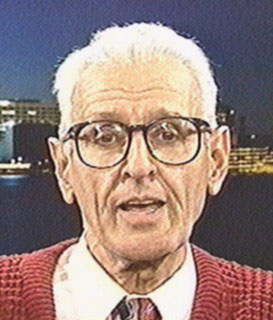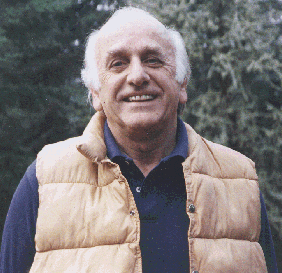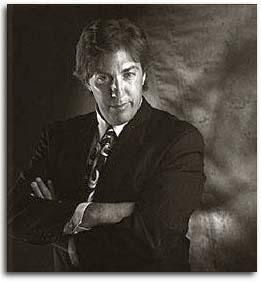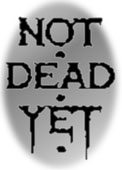



























|
November/December, 1997 Volume XII Number 9

Killing
us
softly
by Cathy Ramey
If it is not a right, it is still a duty. So say those of the "right to die movement" after the United States Supreme Court, in New York v. Quill and State of Washington v. Glucksberg, rejected the notion that medical intervention to bring about death is a "fundamental right."
For many in the national Christian community the opinions handed down meant victory, a time to relax and rejoice in what appeared to be conservative decision-making from an overly liberal court. But for those who have followed the progress of the eugenics movement, alarm bells were ringing. Sirens were going off and red lights were flashing.
The U.S. Supreme Court had certainly said that assisted suicide/euthanasia was not to be accorded the high protection afforded the right to vote, speak freely, and practice one's religion. But the court failed to articulate what Western civilization has, until 1973, consistently held to be true--that curing and intentional killing are mutually exclusive enterprises.
In fact, analysts warned that amid the language of the high court's decision was an ultimatum. States were all but being ordered to "deal" with the issue of intentional "death on demand," or the U.S. Supreme Court would . . . just as was done in 1973 when they ruled on an obscure Texas case brought under the citation of Roe v. Wade.
By refusing to call medical killing egregious and unlawful, the court gave a nod and a wink to those demanding that family doctors be allowed to kill their patients.
On Tuesday, October 14, 1997, the court proved analysts correct by refusing to hear Lee v. Oregon, a case in which the state was contesting a voter-approved right to so-called "physician assisted suicide."
By rejecting the case and leaving doctor-assisted-death to become settled law in Oregon, the U.S. Supreme Court clearly demonstrated the direction they hope other states will take in the battle over medical killing. The message in each case has been clear. States are expected to negotiate, and the only acceptable outcome, it seems, is a full scale wedding together of medicine and what has historically been considered to be murder.
Ironically, less than 24 hours after the high court's de facto affirmation of legal euthanasia most of the country barely took notice. Making much of the top story from the previous days news, graduate students at one conservative Christian seminary reflected the ease with which Americans are adopting the death culture. Dallas, it seems, had "stomped" its opposition in a Monday night football game.
From a commentator's standpoint, to bring even the faithful to a point of cultural apathy, it is arguable that the "faith of our fathers"--a reliance on the Almighty--has transitioned in the 20th century to the point that even many who claim to be of the Christian persuasion have more faith in government than in God. How else does a society account for such radical shifts in thinking and community behavior with so little outcry from the masses?
The old Christian code of death with dignity, arising out of a life of commitment to God and character molded out of that communion, has been traded in for what can only be described as a mocking imitation of that progression. Character, as Clinton has proven, no longer matters. Death culture activists have modeled a new "death with dignity" wherein the greatest sacrifice one can make for another is to die cleanly, swiftly, and without requiring any messiness or inconvenience to those still alive.
This trading of views has come only with tenacity. Movement-for-death leaders have fought a long and vigorous battle to gain so much ground in American society. A host of legal decisions have scraped away at constitutional supports which in the past offered some protection for the Christian community view. Abhorrent though their goal may be, movement leaders are to be credited with having done a superb job of selling Americans on the concept that under their own moral code there is a "right" way to die, and a wrong way.
 Most Americans recognize at least one movement leader, Dr. Jack Kevorkian of Royal Oak, Michigan.
Most Americans recognize at least one movement leader, Dr. Jack Kevorkian of Royal Oak, Michigan.
"Dr. Death," as he is called, is a halloweenish character who has killed over 62 persons since 1991. Though he publicly and proudly admits to being involved in at least 42 of the deaths credited to him, police and politicians appear hopelessly confused about how to stop him.
In October Kevorkian requested and got a meeting with the county prosecutor. To date it seems that the best effort Prosecutor Carl Marlinga can come up with to "manage" Kevorkian's crimes is to respond to such a request. The goal of the meeting was not to restrict Kevorkian's activity, but to work out a system for alerting the coroner and disposing of bodies in a less alarming fashion than in the past. Apparently his recent penchant for leaving bodies in hotel rooms has created a state of crisis for a law enforcement institution that has all but given up any pretense of prosecuting him as a criminal.
Such accommodation to a man who is acting outside of the law has been promoted by activists who operate in the judicial realm. Kevorkian has six times been charged with killing or assisting in killing those who have sought relief from pain. Four times he has gone to trial, and four times he has walked away without being convicted.
One county prosecutor credits Judge activist Charles Miel with a level of tolerance for Kevorkian which is unusual. Geoffrey Feiger, the attorney who has represented Kevorkian since his first kill in 1991, has been allowed to accuse, badger, and lecture witnesses without restraint in Judge Miel's courtroom. Despite the prosecutor's objections, one tirade involved Feiger lecturing to the jury for three hours about what he insisted was a religious campaign of terror targeting his client. Later, switching to the State Supreme Court as persecutor, he claimed that any ruling against his client amounted to a conspiracy, and ultimately to government mandated suffering.
Despite Feiger's insistence that his client is nothing more than a compassionate (unlicensed) physician, and a victim at that, there is ample reason to respond that he is otherwise.
In reality Jack Kevorkian and Geoffrey Feiger are two of the death-on-demand movement's strongest ideologues.
Dr. Death's own homepage on the Internet offers a survey to readers in which they are asked to select a standard for assisted suicide/euthanasia. The options include killing of the "terminally ill," "depressed," "those in pain," "children under twelve, at parents request," and the "poor, after a court hearing, upon society's request." And in every case the option has been publicly endorsed by Kevorkian at one time or another.
Jack Kevorkian's private acts have affirmed his commitment to continually expand death-on-demand. Despite early claims that his victims were restricted to what he defined as the "imminently terminally ill," less than six months to live, none of those killed would have died within a period of six months without his aid. His first victim was expected to live for many years with a diagnosis of Alzheimer's disease. Several of those killed evidenced no chronic, much less life-threatening, disease at the time of their autopsies. In all of the cases connected unquestionably to Jack Kevorkian the only imminent threat to the patient's life was the doctor himself.
The fallout from Kevorkian's romance with death has not been limited to those who actively seek his aid either. During the month of January in 1997 Michigan State University was rocked by the suicide deaths of five male students. Dr. Rosalind Griffin of nearby Detroit's Sinai Hospital said the suicides were connected to "the extensive coverage of Jack Kevorkian's assisted suicides" which had "glamorized suicide as a way of making a statement. . . . [Suicide] used to be the choice of last resort; now it has become held out as painless, a way of solving a problem."
In the same month, at Oakland County's Oxford High School, a short way away from where Kevorkian has committed most of his killing, one high school student succeeded in killing himself. At least four others were known to have tried during the same period of time, however they did not succeed.
Kevorkian, Feiger, and Judge Charles Miel are just a few of the many, many death-on-demand activists around the country.

Derek Humphrey
There is the infamous Derek Humphrey and his Hemlock Society who have promoted everything from self-inflicted death, to physician complicit death, and the right for adults and even children as young as age six to kill themselves for any reason.
Humphrey "helped" his first wife to die when she developed cancer. He was never tried for the crime. His second wife too became ill, but when she refused to commit suicide Humphrey allegedly became abusive and later divorced her.
In 1994, Washington District Court Judge Barbara Rothstein effectively threw out the state's 142 year old law against suicide claiming that terminally ill, competent persons have a constitutionally protected right to some sort of medical assistance to end their lives. Though the U.S. Supreme Court rejected her "constitutional" premise, Rothstein's judicial activism laid the groundwork which is eventually expected to produce a court constructed right to medical killing of the born in the future. (Again, medical killing for the unborn has been court protected since 1973 when the U.S. Supreme Court ruled on Roe v. Wade and Doe v Bolton.)
Judge Stephen Reinhardt of the Ninth Circuit Court of Appeals is another activist in favor of euthanasia. Though his effort to find support in the Constitution for his belief was later rejected, in 1996 he wrote, "There is a constitutionally protected liberty interest in determining the time and manner of one's own death.." Those qualified to assist in the process of killing were specifically identified in footnote number 140 of his opinion. The list includes "doctor," "pharmacist," "health care worker," "family member," or "any persons who help the patient to his death bed."
Some institutions have cautiously, quietly joined the call for euthanasia. Blue Cross and Blue Shield of Michigan Foundation paid for a survey promoting physician assisted suicide by giving a grant to suicide rights activist Dr. Howard Brody. Respondents were appealed to by being presented with what might be described as idyllic circumstances; availability limited to the unquestionably terminally ill, a procedure managed in a comfortable therapeutic environment, and the patient dispatched without any pain.
Of course Blue Cross-Blue Shield is not a trendsetter in the medical community. Medical Journals such as the New England Journal of Medicine, JAMA, and Lancet have each paid for and published survey material which might be said to promote the idea that physicians ought to be allowed to kill. And under managed care, speculation has escalated about how far medical coverage providers might be willing to go in promoting euthanasia.
In contrast to those who see medical killing of the terminally ill (and others) as the wave of the future, the American Medical Association faced down two of its own euthanasia activist-physicians in June of 1996. David P. Carter and Ulrich F. Danckers each proposed resolutions intended to move the AMA away from its historically strong stand against suicide of any kind, and particularly of the sort proposed by "right to die" activists. The organization defeated both resolutions with an almost unanimous vote by the 430 member House of Delegates. It has since reaffirmed its stand on several occasions.
Outside of the medical community there are other institutions, even religious bodies who have endorsed euthanasia as a means of managing an aging population.
In January of 1997 the Episcopal Diocese of Newark, NJ, appr2oved a resolution which states that committing suicide or helping another to commit suicide is morally permissible in some instances.
Bishop for the Diocese, John Spong, using the type of double-speak common in the abortion rights movement, introduced the resolution to the national Episcopal Church at its General Convention calling physician assisted suicide "a life-affirming moral choice." While the Denomination did not adopt his statement, it was only rejected by what might be construed to be a narrow margin. The Convention drafted contrasting statement, one which listed ten reasons why suicide is morally wrong, and the other which listed eight reasons why suicide might be morally acceptable to the Episcopal Church.
Returning to the judicial realm, besides Judge Charles Miel there are other jurists around the country who are death-on-demand activists bent on using their positions to further medical killing.
Judge Jessica Cooper is a Michigan activist who warned jurors against finding Jack Kevorkian guilty during one of his trials. Their job, she told the jury, was to return a guilty verdict only if it could be proven that the defendant's single motive was to kill. Concern over suffering and a desire to alleviate pain were to be considered as proof for finding Kevorkian innocent. An appeals court ordered that she restate her instructions to the jury. She never actually complied with the order.
Then there is Charles E. Teel who ordered a hospital to withhold food and water from a patient In Missouri. His order was appealed all the way up to the U.S. Supreme Court. The high court ruled that food and hydration could not be withheld unless there was clear indication that the patient, if competent, would have agreed. Lawyers quickly rounded up three friends or acquantances who had known the patient prior to the time when she became disabled as the result of a car accident. Each testified that the young woman in question had stated "I wouldn't want to live like that" when remarking about a disabled person. Nancy Beth Cruzan was finally made to starve. She died on December 26, 1991.
In Florida Judge S. Joseph Davis ruled in January of 1997 that county authorities could not file criminal charges against a physician, Cecil McIver, if he elected to end the life of AIDS patient Charles Hall. The decision to kill, he ruled, was merely a matter of choosing one treatment option over another.
Dr. McIver inherited Hall as a patient only for the purpose of allowing Judge Davis to make such a ruling. Both doctor and paient were strangers to each other, recruited by the Florida Hemlock Society and the American Civil Liberties Union (ACLU) for no other reason than to establish case law regarding claims of "personal autonomy" in choosing death as a medical remedy.
Though the state attempted to gain an injunction against Judge Davis' ruling, another activist, Lucy Brown, a Florida appeals court judge, rejected the state's right to intervene. Though Hall, who contracted AIDS through a blood transfusion, was not even ill with the disease, Brown wrote that the state's effort to restrain Dr. McIver from killing him meant that Hall would be "forced to suffer a miserable and degrading death."
The American Psychiatric Association implicitly endorsed the expansion of medical killing in May of 1995. At their annual meeting they hosted George Delury as a keynote speaker.
In a plea-bargain which resulted in a lesser charge for pleading guilty, Delury had just been convicted of killing his wife by feeding her a lethal potion less than two months earlier. Myrna Delury, he had noted in his diary, was "sucking my life out of me like a vampire and nobody cares."
The six month sentence George Delury received for killing his disabled wife was scheduled to begin only one week after he addressed the group of psychiatrists.
The network, NBC raised Delury to hero-status as well. On May 16, 1995 "The Charles Grodin Show" portrayed Delury as a saint. In an interview with the host Delury stated that people needed to think more deeply about death. His point was not that people needed to have a healthy acceptance of death when it comes, it was to say that death ought to be pursued, "recognizing the value of our death to society." The disabled, he suggested are obligated to give the gift of death to a healthy society.
Opposition to medical killing has always been the domain of the Church in general, and fortunately there are a number of denominations or groups that, faced with the demand for assisted suicide/euthanasia, have reaffirmed their objections.
In July the Lutheran Church Missouri Synod passed a resolution condemning the view that medical persons might have "any part in actively inducing death, even at the patient's request or the request of the patient's family."
The Evangelical Lutheran Church of America, The Catholic Church, the Christian Medical and Dental Association, the Christian Legal Society, Focus on the Family, Inc., and others have all denounced euthanasia, whether requested by the patient or not.
Additionally, the Council of Orthodox Rabbis of Greater Detroit, neighbors to Jack Kevorkian, have come out against doctor assisted death.
Rabbi Elimelech Silberberg, of the West Bloomfield Congregation of Bais Chabad, a Jewish synogogue in a suburb much like Kevorkian's Royal Oak hometown, referred to the practice as "murder" and stated, "Suicide and murder are considered the greatest crimes against God and man."

Geoffrey Feiger
In response to the public statement of Siberberg and the Council of Orthodox Rabbis, Kevorkian attorney Geoffrey Feiger once again made headlines for his client by charging that the Rabbis were "closer to Nazis than they think." He warned that the group should "stay out of my business."
While we have earlier looked at activists who promote killing from their position on the bench, it is important to observe that there are also those judges who have opposed Jack Kevorkian and the movement to further legitimize medical killing. Judge Alice Gilbert serves the Oakland County District Court. She wrote the original injunction against Dr. Death's thanatron, or suicide machine. Despite efforts to recover the device from the County, Kevorkian's original homemade infusion pump is still under lock and key. In fact, Kevorkian's own attempt to use the courts to recover it instigated a tighter effort to keep it out of his grasp.
Another group which appears to be in radical opposition to legalized killing are, interestingly enough, the terminally ill themselves. There are a number of studies which indicates that those patients with proper pain management are in no hurry to die. Instead it is those who are significantly emotionally depressed and those least at risk of having such a procedure used as part of their medical "treatment" (adults between the ages of 20 and 40) who make up the largest block of supporters for euthanasia of any kind.
What this means is that the very population that is being used to sell assisted suicide says "No thanks!"
 One group which has taken to the streets in Michigan is the "Not Dead Yet" Coalition made up of those who are either terminally ill or disabled. Jack Kevorkian moved from his downtown apartment building shortly after some members of the group showed up in Michigan armed with pickets signs and propelling themselves in wheelchairs in front of local businesses.
One group which has taken to the streets in Michigan is the "Not Dead Yet" Coalition made up of those who are either terminally ill or disabled. Jack Kevorkian moved from his downtown apartment building shortly after some members of the group showed up in Michigan armed with pickets signs and propelling themselves in wheelchairs in front of local businesses.
In the end it may be that Not Dead Yet and other representative groups will be most effective at encouraging restraint, moreso than the courts or any of the long-standing anti-euthanasia organizations.
In fact, if indications from the U.S. Supreme Court are being read right, such groups as exist for the advocacy of the sick and disabled ought to waste no time in demanding a Constitutional Amendment to correctly spell out a preference for preserving all life. It is likely that the Human Life Amendment, long sought after by abortion opponents, would have offered clear protection to the aged, ill, despairing and disabled. In the absence of such an amendment new at-risk groups must forge a plan to protect themselves from the latest movement for "choice" activists.
QUOTES . . .
"Last week Nancy Cruzan's father hanged himself. For grief, it was said; I should like to think remorse."
Philip Terzian, Washington Times, August 28, 1996
Joseph Cruzan fought all the way to the U.S. Supreme Court for the right to withdraw food and water from his physically disabled daughter. Nancy Beth Cruzan died of starvation and dehydration on December 26, 1991.
"[Physician assisted suicide] is not about 'settling off to sleep.' It is about conducting a controversial experiment in which the state would permit and participate in what amounts to human experimentation--experimentation in which death producing compounds are prescribed for a particularly vulnerable class of citizens."
Lee v. Harcleroad, p. 23
Amicus brief in opposition to Oregon's law allowing doctors to kill their patients.
"We should not hook up Jack Kevorkian to the United States Treasury. . . . Under no circumstances should the federal government be paying physicians to help people kill themselves."
Sen. Joseph Biden
April 1997 hearing to argue for legislation which, signed into law by Clinton, bans using federal dollars to fund assisted suicide.
"In a democracy, judges are not free to simply look at the Constitution and declare new rights to correct every perceived wrong, for if the Constitution comes to mean everything to everybody--a veritable grabbag of rights--it will mean nothing when we really need it to protect those fundamental rights which are clearly delineated, because its legitimacy and grandeur will have been drained from it."
U.S. District Judge Gerald Rosen
Ruling in a lawsuit filed by Jack Kevorkian to prevent the county from prosecuting him. The judge found that the Constitution does not prescribe a right to die. The Oakland County Prosecutor, he said, was free to pursue charges against Kevorkian.
"I'm sure there will be pressure from the business side. Something like 70% of [health care] expenditures occur in the last six months of life."
Dr. Victor Dorodny, Nat'l Assoc. of Managed Care Physicians
In a statement opposing the Ninth Circuit Court of Appeals 1996 opinion that assisted suicide be viewed as a protected right.

|
Copyright © 1997 AFLM
|
